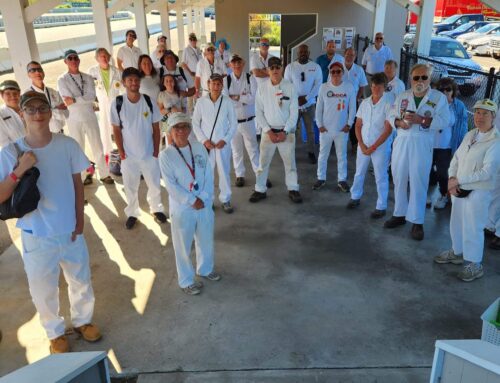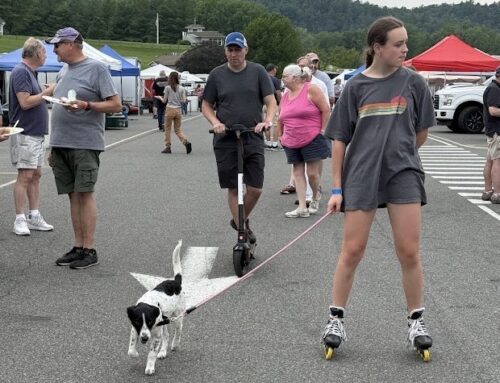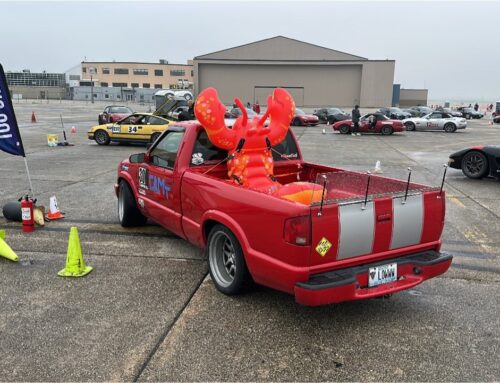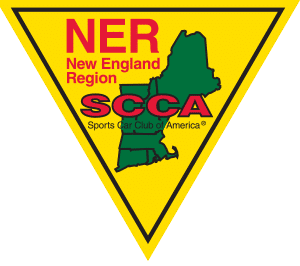Written by Greg Amy
Managing SCCA Participant Insurance
Yeah, I did a boo-boo. Backed a race car into a wall at VIR at around 100 or so (maybe more, I dunno). It made a big noise. And it actually hurt bad enough where I was promptly taken away in the ambulance to visit a local hospital “for further diagnosis.” Having had my bell rung pretty good (I was even “out” for a short bit) I wasn’t in any position to argue about it.
As it continued to hurt like hell in the hospital, the diagnosis (nothing major was obviously broken) was positive enough that they released me later that afternoon. It continued to hurt bad enough that I could not drive myself to local friends’ home to convalesce, and I certainly could not drive myself home to Connecticut. Fortunately, the local friends were happy to invite me into their home (and were entertained enough to give me a lot of teasing over it). I did eventually get home, and with two months of physical therapy (and nursing what I figure was a couple of cracked ribs) I was back in the saddle.
It’s been some months since that crash and during that time I learned a thing or two about SCCA’s medical insurance. I’d like to pass that along to you, just in case you find yourself in the same situation.
I just want to state up front that the participant medical insurance provided by SCCA through K&K is very very very good. Frankly, it was a financial blessing.
Prior to the crash, I knew surprisingly little about SCCA’s insurance. Sure, as a steward I knew that SCCA, unlike many (most?) other sanctioning bodies, covered any damage I did to the track during a crash (like guardrails, tire walls, etc). I also knew the insurance was provided by K&K Insurance, and I knew that it also somehow covered any out-of-pocket medical costs.
But how did it actually work? I had no clue. I do now.
Bottom line, our participant insurance covers any out-of-pocket medical expenses no matter how big or how small the incident (as long as it happened at a covered SCCA event). That includes clouting a wall at 100mph and getting a ride in an ambulance, or even accidentally running a drill bit through that meaty part of your hand while making a paddock repair (yep, I’ve done that). But there’s some things you need to know and do to ensure that coverage happens smoothly for you.
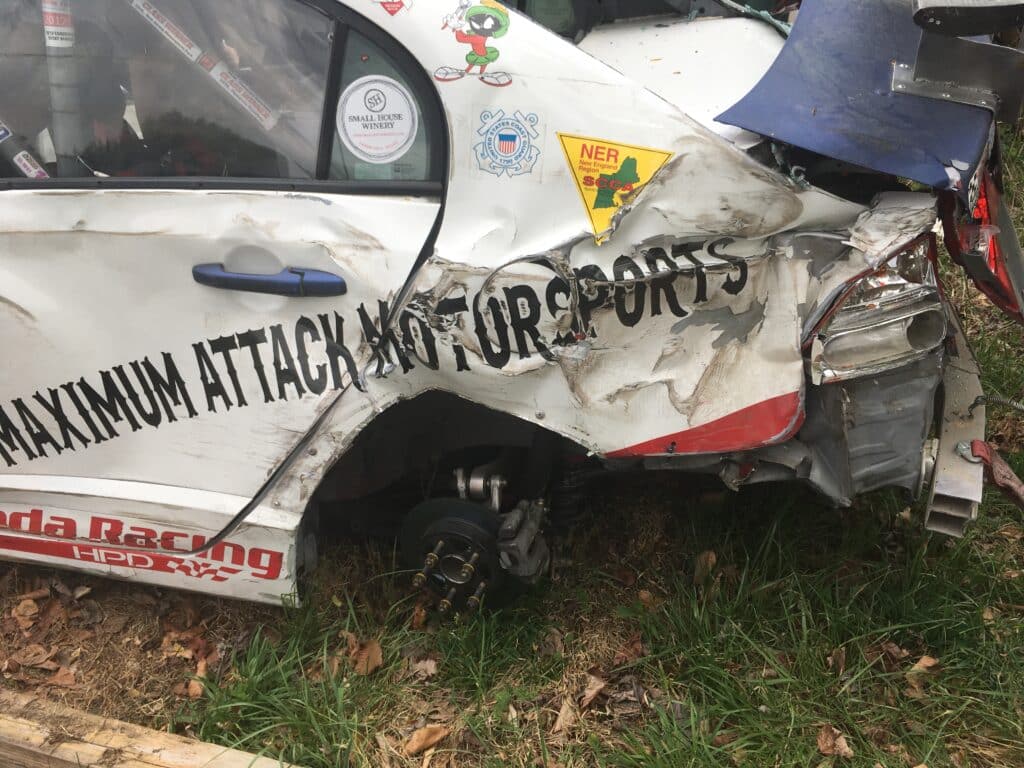
Starting the Process
First, if you’re hurt at an SCCA event, you must report it to the Safety Steward. Some of us have learned the hard way that one of the important responsibilities of the Safety Steward is to report such incidents to K&K. Based on those reports, K&K will start a claim process automatically. But without that steward report, K&K doesn’t know about it so you won’t have a claim! Most of the time if you’re involved in an obvious incident then the Safety Steward will find you; in my crash at VIR he met me at the track’s medical building after I got transported in (before getting transported out). But if you run that drill bit through the meaty part of your hand then they may not know about it so you have to report it. Sure you’ll feel silly, but I’m guessing you’ll feel even more silly when it gets infected and you have to pay for an emergency room visit on Monday morning and you won’t get reimbursed because you didn’t report it to the Safety Steward.
Tip #1: Report to the Safety Steward!
The Safety Steward is sometimes around the track’s Medical Building (where you may be going anyway) or talk to track Medical staff or any steward; they can contact the Safety Steward to meet you. If it’s something small that doesn’t need immediate medical attention then you might just talk directly to the Safety Steward at your convenience but expect the Steward will want you to visit Medical for a quick check.
Again, why is this step so important? Because the Safety Steward reports all incidents to K&K Insurance. And without that report, neither the SCCA nor K&K have any clue that you were hurt at an SCCA event.
When in doubt, talk to the Safety Steward!
The steward will give you a generic unfilled K&K insurance “Accident Medical Claim Form” with some state-specific insurance info on back – hang onto this form. Some may remember this form as “The Green Card” (because it used to be a small green card) but we don’t call it that any more. This form has information you’ll give to any medical facility you may need to visit for this incident.
Once K&K receives the Steward’s report they will create a claim number for you. That claim number is very important, as this is what you’re going to give to medical providers to bill K&K directly. It’s the same in function as showing the facility your insurance coverage card.
One hang-up with this process is that it takes K&K 7-10 business days to get this report info from the Safety Steward, create that claim, and mail it to you. But that’s manageable. More on this later.
This whole process, by the way, is why we want to sign in our friends and families as crew or participants. Only participants – not spectators or someone that just signed the track waiver to get in – are covered under this insurance policy.
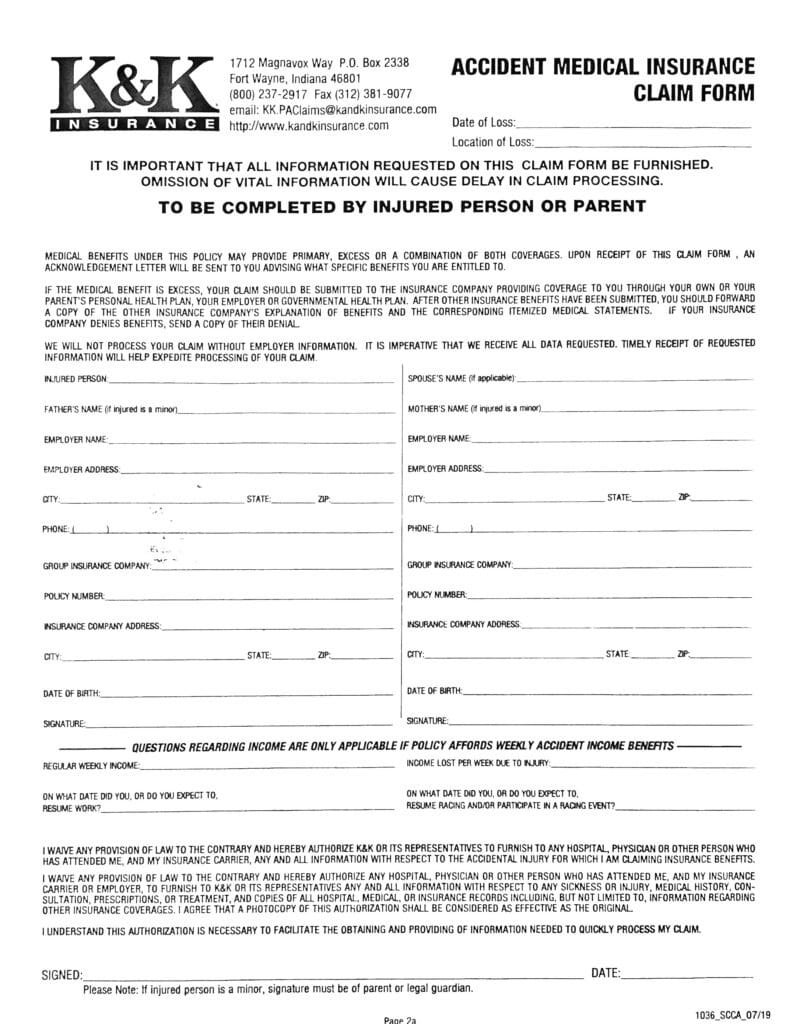
Managing the Process
K&K claim procedures vary depending whether or not you have primary medical insurance (which most of us probably do). Given that K&K’s insurance is secondary to your main insurance it will only pay what your primary coverage does not. So if you end up in the hospital, or an emergency room the next day for related symptoms, or a local doc for a follow up, or even a physical therapy facility for related injuries, everything will be run through your primary insurance first.
With primary insurance everything should be straightforward. You’ve done this before: they’ll ask you for that insurance card, and they’ll process the claims through your insurance company. They bill your insurance company and it could take several weeks for insurance claims to process.
So Tip #2: Run everything through your primary medical insurance.
But you know that at some point you’ll get a bill from the hospital (or the pharmacy, or docs, or assistants, or facilities, techs, whatever) for the balances due because of your co-pays and deductibles. And this is where K&K comes in.
By the time you start getting those bills, you should already have a letter from K&K with your claim number. If you don’t have that letter within 2-3 weeks of the incident then call K&K – their info is on that Medical Claim Form you’re hanging on to – and inquire with them about it. Maybe it’s still in process, or maybe there’s a mixup? Regardless, if you do this within a 90-day period of the event then you can still get it worked out easily. After that, maybe not so easily…
Tip #3: Watch for that K&K claim letter to arrive within 2-3 weeks. If you have not gotten it, call them.
Now that you’re armed with that letter and claim number from K&K, you’re ready. When you get a bill from the hospital/doc/facilities/whatever, look for their billing department info and call them. Be all nice and sweet, get them to look up your account info. Let them know you have event secondary insurance and ask them to please submit the balance claim to K&K. They’ll ask you for K&K’s info (company name, address, phone number, and your claim number — it’s on that claim letter.) 100% of the billing departments I spoke to about these balance charges are well-versed in the process and were incredibly helpful in redirecting those to K&K (be nice to them, they deal with a lot of rude people all day).
Tip #4: When the bills arrive, call the biller and ask to submit the claim to K&K
Here’s a “Don’t Do”. Initially, when those bills arrived I decided to pay those charges with my credit card, expecting to be reimbursed by K&K. Reason was, I (needlessly) worried that the secondary billing process with K&K might get delayed and maybe mess up my credit report. Totally wrong. When I submitted these credit card-paid reimbursements to K&K I got back a rejection letter from them, asking me to resubmit the claim with “the UB04 or CMS1500 billing form”. So what is that, you ask? I have no clue. So I called the hospital’s billing department and asked for that so I could send it to K&K; they replied with something along the lines of “oh, we can’t provide that to you, that’s for the insurance companies.”
But, all was not lost! For each of the ones that I paid myself (it was only the first couple of bills) I contacted the billers and asked them to resubmit those to K&K. They were all totally OK with that, and once the claims were approved by K&K then K&K actually sent me refund checks.
So Tip #5: don’t do that. Instead, follow Tip #4 and just redirect the billing facilities to submit the balance claims to K&K. I did that with all the remaining bills and K&K paid all of them, 100%. And each time they paid a balance I got a letter from them confirming and showing “Patient Not Responsible.”
Sweet.
OK, so what if I don’t have primary insurance?
Well, things may get sticky if you don’t have primary insurance. From my experience at the two hospitals I visited after the crash (I went to another emergency department the next morning to check up on some symptoms), plus a local doc and physical therapy, one of the first things each asked me for upon arrival was my insurance information. You won’t have your K&K claim number for at least a few days (K&K will generate it as soon as they get the reports), so what do you do?
Well, this is purely conjecture on my part, but as I see it your goal is to get cared for and get out of that facility without having to dig into your pockets. Maybe show the facility your K&K claim form and explain to them you are covered by event insurance but you won’t have a claim number for about a week or two. Maybe talk the good talk and be nice and sweet about it and they’ll let you out of the facility without having to post any financial coverage. Maybe you’ll give them a credit card number but get their promise they won’t bill it right away. Maybe talk to their financing group to work out some payment terms to buy some time for them to deal with K&K after.
But whatever you do, your goal here is to avoid having to pay anything out of pocket, because though you will eventually get reimbursed by K&K it will be a more work (see my “UB04 or CMS1500 billing form” discussion above). If there’s any way that you can convince them that you are not a deadbeat and that you have event insurance and will have claim information within the next 5-10 business days (and you can always call K&K in 3-5 biz days to ask for that claim number) then all the better.
So, in summary
- No matter how minor you think your injury may be, talk to the Safety Steward. Without that, you will have no claim with K&K. Besides, you never know how you’ll feel the next morning, and you’re fully covered, so why not?
- Ensure the Safety Steward has all your appropriate information. And if you need post-race assistance (a ride back from the hospital? Help getting things packed up?) then ask them. They will be glad to find folks to make that happen*.
- Before you leave the track, get a copy of K&K’s “Accident Medical Claim Form” from the Safety Steward. It’ll be blank, but it will have info that you will provide to the medical facilities you visit, and info on how to contact K&K.
- If you have primary medical insurance, give that to the facilities for initial coverage to get you out of the facility; you can deal with K&K later to pay for the co-pays and deductibles balances due.
- If you do NOT have primary medical coverage, try to convince the facility that you actually do have incident/event coverage and you’re not going to be a deadbeat. You’ll have claim information in 5-10 business days.
- Call K&K toward the end of the week after the event, both to ensure they received the reports from the Safety Steward and also to see if they have your claim number. Snag that number if they have it. You’ll get a follow-up letter from K&K with that info in a week or two.
- When a bill or co-pay arrives, do not pay it. Instead, call the care facility’s billing department, tell them you have “secondary insurance”, and ask them to submit that claim to K&K. Have K&K’s contact info from form, as well as your claim number.
- If you had to pay any funds to a doc or facility, contact their billing department and ask them to submit to K&K for those charges, so K&K can refund you.
Managing these kinds of insurance claims can be time-consuming but in the end you will be able to walk away having paid nothing out of pocket. I had two hospital emergency rooms visits, two visits to the pharmacy for drugs, four visits to a primary physician, two radiology visits, and 8 weeks of physical therapy, and I paid…nothing. Zilch, nada. Not one red cent. This is one of the incredible benefits we have as SCCA members and we should absolutely take advantage of it!
Oh, and that wall I clouted? And the ambulance ride to the hospital? Yeah, K&K covered those bills directly and I didn’t even have to file a claim for it!
Thank you, SCCA and K&K.
Now to figure out how I’m going to build a new race car…
Greg
*In my case, I was taken away by the ambulance and never went back to the track. But I was blessed with a friend that drove to the hospital, stayed with me during all the procedures, then drove me to where I would stay for the next week. Other friends, paddock mates, and their parents not only took care of the car and our entire paddock equipment, but also packed up my RV trailer and dragged it and the Excursion to where I was convalescing.
The SCCA community is strong. I’d like to say I’d have had no idea what I would have done if they weren’t there, but in fact I wouldn’t have been there in the first place if they weren’t. No man is an island…

